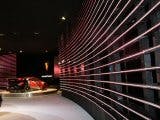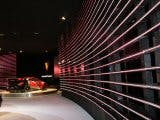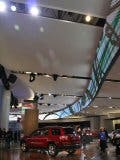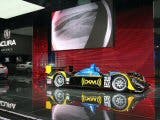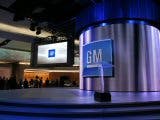Continuing with last year’s “immersive video” trend, Barco LED products have been designed architecturally into the walls themselves — often created with complex curves and sweeping arcs of video imagery.
Auto manufacturers including Cadillac, GM, Ford, Saturn, Toyota, Lexus, Nissan, Porsche, KIA, Land Rover, Hummer, Jeep, Infinity and Buick have all selected Barco LED tiles — not simply as video presentation forums, but also for virtual scenery and the ability to create dynamic color transitions with ease.
Nissan used OLite 510 tiles for a huge, overhead carousel of video, displaying graphics, text, and new vehicle promos.
Acura used towering arrays of MiSTRIP modules for graphically rich backdrops behind two auto turntables.
MiTRIX modules are semi-transparent, with a self-supporting central backbone. The modules are designed with a 24mm pixel pitch, an extremely small size (384 x 192mm), and a very light weight design (1kg).
